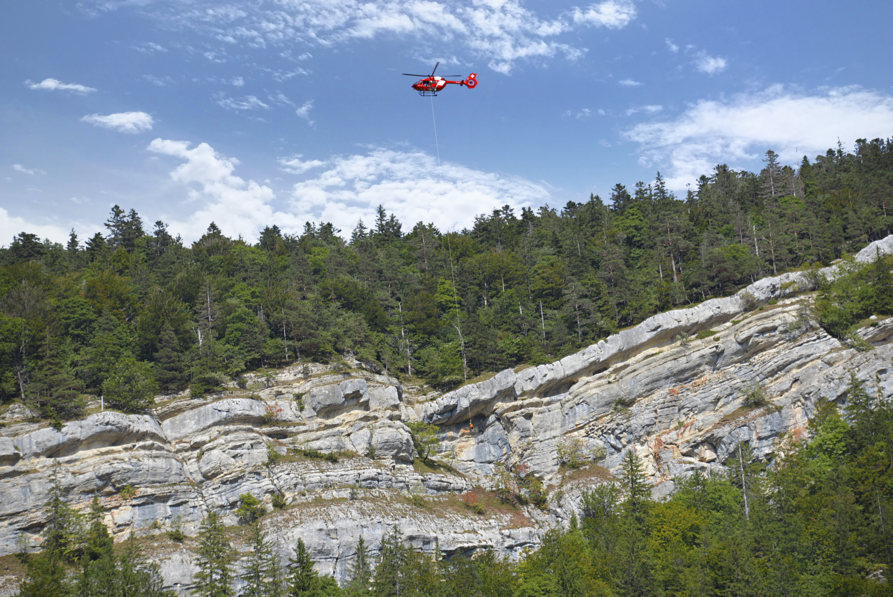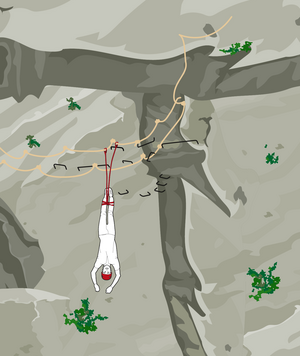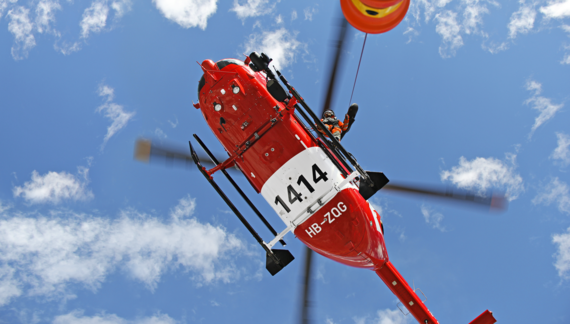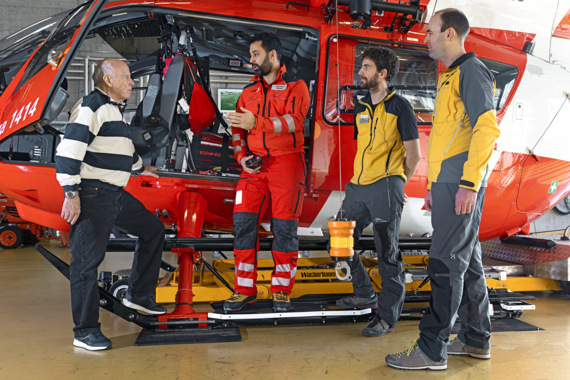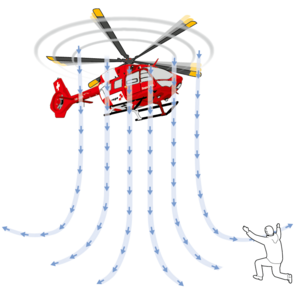Yves Apothéloz is a sprightly pensioner from the canton of Neuchâtel. The ski instructor has already climbed around 20 via ferratas. On this glorious summer day, he decides to explore the via ferrata in Noiraigue. He packs his climbing harness and helmet and checks the length of the ropes. The 81-year-old has packed his mobile phone with the Rega app installed on it in his cross-body bag. Besides his climbing gear, he is wearing a very special T-shirt on this day: his son, who died in the mountain eight years ago, had brought it for him from Peru.
Climbing harness slips down to his ankles
The via ferrata is 550 metres high and offers a magnificent view of the Val-de-Travers. But at the last obstacle before the finish, the excursion takes an abrupt turn: Yves Apothéloz’s climbing harness slips from his waist down to his ankles. When he tries to pull it back up, he loses his footing and falls into the rope. “Fortunately, the climbing harness withstood the strain, but now it was wrapped just around my ankles, leaving me hanging by my feet from the end of a rope in the rock face,” he recalls. Suspended upside down above the precipice and dazed from the fall, Yves Apothéloz nevertheless manages to take his phone out of his small cross-body bag. He alerts Rega using the Rega app, which automatically transmits his location to the Rega Operations Centre.

